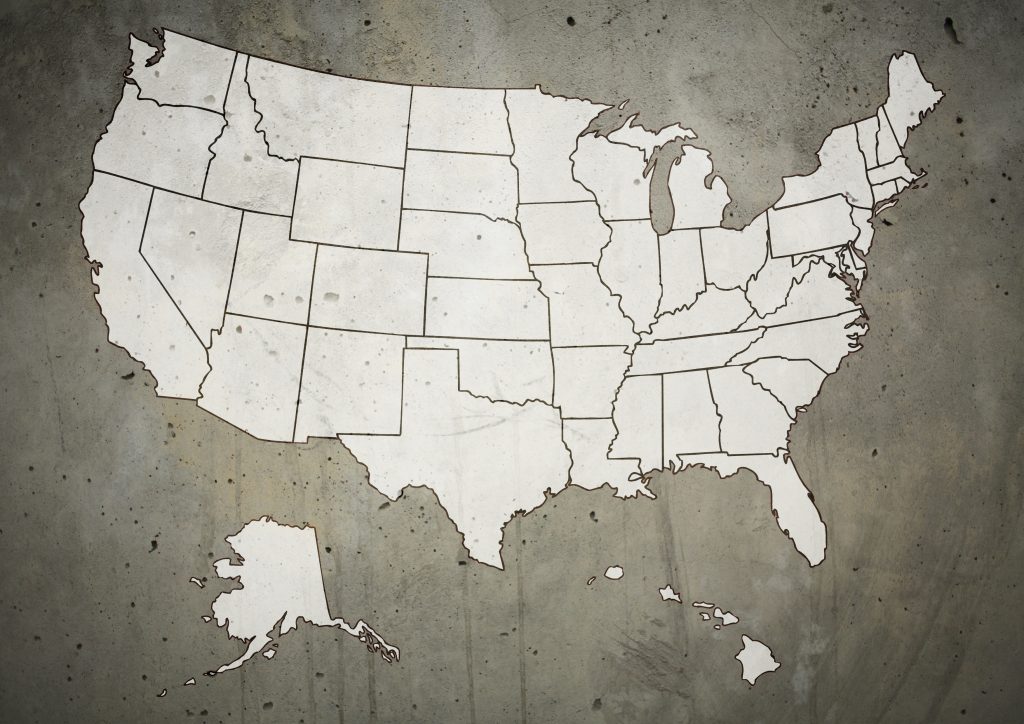This is the third post in a retrospective series of blogs reviewing major state tax policy trends in 2018. You can find the first post on state responses to the federal tax bill here and the second on tax credits for workers and their families here. This post updates a mid-session trends piece on state revenue shortfalls and the impact on education and other services.
This year a teachers’ movement took the nation by storm. Educators across the country protested and participated in walkouts, demanding higher wages, additional resources for their students and, in many cases, the end to harmful tax cuts that have impeded adequate funding of key state priorities.
States’ need for revenue and increased investment in key public services is not unique to this legislative session. But the extent of disinvestment—particularly in education—has been a driving force behind policy discussion and state legislative action this year. In many cases ill-advised tax cuts coupled with persistent school funding cuts led states to this common fate, initiating a powerful and growing trend.
Here’s how lawmakers in a handful of state responded:
Responsibly, with room for improvement
Oklahoma lawmakers approved a package of funding increases that included more money for school operations and pay raises for teachers, school support staff and state workers, along with some benefit enhancements. Unlike many other states, these commitments were largely paid for through a range of revenue raising measures. Lawmakers opted to increase the cigarette tax by $1 per pack, change how other tobacco products are taxed, raise gasoline and diesel fuel taxes by an additional 3 cents and 6 cents per gallon, respectively, and increase the state’s gross production tax rate for the first 36 months of production from 2 to 5 percent. Lawmakers also capped itemized deductions at $17,000 per year, excluding charitable contributions and medical expenses.
While these changes are commendable, they are relatively modest when viewed against the backdrop of a decade-long marathon of repeated, unaffordable cuts to the state’s income tax. Critical Oklahoma services remain underfunded, and it will take years and much public commitment to recover. Further, revenue sources tapped during this year’s session are largely regressive, asking more of low- and middle-income Oklahomans than of those at the top. Noting these shortcomings, educators engaged in a nine-day teacher walkout to push for a more robust funding increase.
Louisiana, like Oklahoma, faced missed opportunities this year.
In Louisiana, education—particularly higher education—was one of many critical services stressed by potential cuts. To avoid deep spending cuts and a further downgrade of the state’s credit rating, lawmakers passed a temporary 0.45 percentage point sales tax increase during the state’s third special session. The state’s sales tax rate was set to fall from 5 to 4 percent but, because of the compromise, will now be held at 4.45 percent until mid-2025. While the move staves off deep budget cuts, it does not result in a more diverse, comprehensive and equitable tax base for the Bayou State.
Forcing state residents to take matters into their own hands
This session Arizona lawmakers extended Prop 301, a six-tenths of a cent sales tax that was approved by voters in 2000, until 2041. This extension will help raise needed revenue, but the fact remains that the state has cut $4.6 billion from public schools since 2009. Teacher pay has stagnated and class sizes are growing—hardly the pillars of a good education system. Teachers took to Phoenix in a week-long strike demanding higher pay, additional classroom resources, pay increases for support staff, and a promise of no new tax cuts—a complete reversal on the state’s decades of disinvestment—until funding is restored.
Ignoring a bulk of these requests, lawmakers passed a budget that includes a 20 percent teacher pay increase by 2020. Unfortunately, the plan does not raise new sustainable revenue but rather relies on spending cuts, fund sweeps and shifting more of the cost of services on to local taxpayers. As legislators continue to weigh additional options for cutting taxes, advocates for education and an equitable tax system organized to place a tax on high-income earners on the ballot. The measure would raise the state’s income tax rate by 3.46 percent on earners making $250,000 (single)/$500,000 (married) and by 4.46 percent on those making $500,000 (single)/$1 million (married). Arizona’s Invest in Education campaign recently submitted more than 270,000 signatures and has strong public support.
In a similar turn of events, advocates in Colorado are moving a ballot initiative to adopt a graduated personal income tax to raise additional funds for education. Advocates for the Great Schools, Thriving Communities ballot measure, or Initiative 93, collected well above the needed 100,000 signatures. If approved, the initiative would raise the state income tax rate on those earning more than $150,000 annually to fund full-day kindergarten and increase funding to public schools. The initiative comes on the heels of state rallies to increase school funding.
By stalling, in the hope that the problem will go away
North Carolina lawmakers opted to continue down their path of tax cuts, allowing $900 million of scheduled personal and corporate income tax cuts to go into effect next year. But there is pushback across the state. Teachers and public education advocates rallied in Raleigh at the start of the state’s legislative session, frustrated with the state’s prioritization of tax cuts (which add up to more than a $3.5 billion annual loss by next year) while per pupil funding remains far below pre-Recession levels. And the situation could get worse. State lawmakers are moving a destructive constitutional amendment to the ballot this fall that would lower the state’s income tax rate cap from 10 to 7 percent.
In West Virginia, a nine-day teacher strike resulted in an average 5 percent raise for educators and some other public employees. This was primarily accomplished through cuts to other areas of state spending. Permanent revenue solutions were not broached. While a step forward for some state employees, the state’s unwillingness to identify a permanent revenue source raises concerns—particularly in a state where over $425 million a year has been lost to business tax cuts.
Through tax shifts and tax cuts
Other states took steps that are likely to make matters worse over the long-run. For instance Kentucky, another state where educators walked out of classrooms to demand further investment, lessened the impact of education spending cuts in connection with a regressive tax overhaul that asks 95 percent of Kentuckians to pay more while the richest in the state receive a massive tax cut. This tax shift is expected to raise a minimal amount of revenue in the short-run while imperiling the state’s long-run revenue growth because it cuts taxes for those very-high-income families faring best in Kentucky’s increasingly unequal economy.
The big picture
In summary, the national teachers’ movement is an amazing example of the importance of public engagement in ensuring adequate funding for key services. Educators and education advocates across the country are speaking out against low-tax agendas. Their relatable stories go to show that indiscriminate tax cuts do not make for sound fiscal policy and harm necessary investment in our communities. Lawmakers have the tools to make their communities thrive and to ensure that the economies offer broadly shared opportunities. They can start down that path by pushing back against regressive, top-heavy tax cuts.



